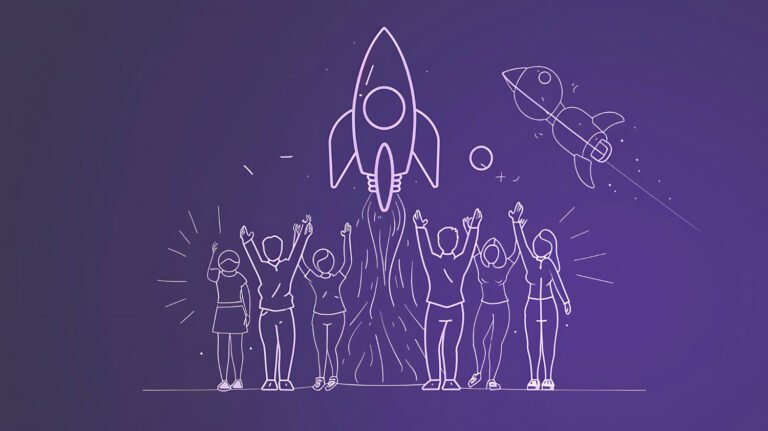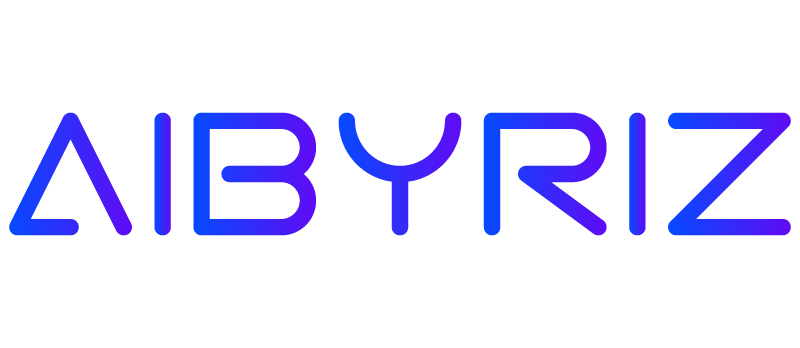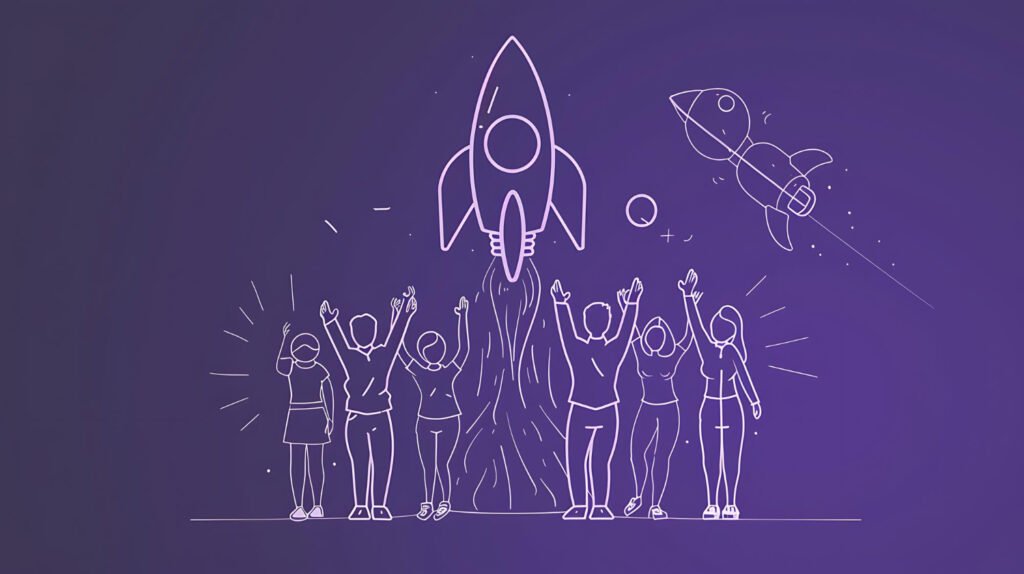AI adoption in workplace training and onboarding has jumped 65% since 2020 and revolutionised how organisations welcome new talent. Companies now use modern AI solutions to create customised onboarding experiences that cut down administrative work and boost employee retention. New hires and HR teams benefit from a more streamlined and engaging onboarding process through these technological advances.
Companies can now use AI-powered learning management systems, virtual assistants, and informed check-ins to improve their training programmes. This piece shows businesses how to use AI for interactive content creation, task automation, and customised training materials that boost career growth. Readers will find practical ways to apply AI-driven performance tools while keeping the human touch in employee integration.
The Evolution of Employee Onboarding
Employee onboarding has altered the map in the last decade and moved from traditional paper-based processes to digital solutions. Companies now understand that proper onboarding is significant to succeed long-term. Research indicates that 86% of employers believe new employees decide whether to stay at an organisation within their first 90 days 1.
Traditional onboarding challenges
Organisations have faced several most important obstacles in their onboarding processes throughout the years:
- Candidates spent 30-60 minutes travelling just to complete manual documentation 2
- HR teams wasted time with back-and-forth emails and interview scheduling
- Heavy reliance on paperwork and physical presence slowed the process
- Candidate selection showed bias during search, selection, and final decisions
- Talent recruitment across borders created complex challenges
These outdated methods drained HR resources and created inconsistent experiences for new hires. Studies show 37% of companies had difficulties with remote onboarding during the pandemic 3. This highlighted how conventional approaches fell short.
The Rise of AI in HR
AI has revolutionised talent management and transformed how organisations handle their HR practices. Recent studies show that AI-powered onboarding procedures now exist in more than two-thirds of organisations 4. The pandemic pushed 82% of office employees to work from home, which accelerated this transformation 5.
Organisations have discovered AI’s potential to streamline their HR operations. The technology excels in handling routine tasks and provides informed solutions. Companies understand that automation could enhance the new hire experience, with 76% acknowledging its benefits. Yet, the automated onboarding process exists in only 20% of companies. This gap suggests untapped opportunities for growth.
How AI is changing onboarding
AI-powered onboarding changes the employee integration process through individual-specific experiences and quick automation. Organisations with standardised onboarding processes see 50% greater new employee retention. This effect proves important.
Modern AI solutions now address critical onboarding elements that nobody noticed before:
- 71% – Building relationships with the core stakeholders
- 53% – Understanding core organisational values
- 54% – Leveraging technical tools effectively
- 46% – Accessing detailed HR benefits information
These changes go beyond making things faster. AI-driven onboarding helps companies keep 82% more new hires and increases employee participation by 54%. AI creates these improvements by offering individual learning paths, automated task management, and steady communication throughout the onboarding trip.
Key AI Applications for Training and Onboarding
Organisations today use artificial intelligence to deliver more engaging and quick training programmes to their employees. AI-based learning management systems show promising growth in the global market. The market value will likely increase from £18.34 billion in 2024 to £25.14 billion by 2032, with a remarkable CAGR of 17% 1.
AI-powered learning management systems
AI-integrated learning management systems (LMS) are transforming corporate training through smart automation and personalization. These systems provide several essential benefits:
- Learning paths that adapt to each person’s progress
- Live performance tracking and feedback
- AI-generated and curated content
- Systems that blend with existing HR infrastructure
- Adaptable options for organisations of all sizes
Research indicates that AI-powered LMS helps organisations track and manage corporate training data with improved efficiency 2. The systems also enable L&D professionals to spot problem areas through AI-based analytics 3.
Chatbots and virtual assistants
AI-powered virtual assistants have become essential tools that transform modern training programmes. These helpful companions work round the clock and provide steady support without getting tired or slowing down 4. Chatbots make training better in several key ways:
| Function | Benefit |
|---|
| Instant Support | Live query resolution |
| Knowledge Access | Quick information retrieval |
| Progress Tracking | Continuous monitoring |
| Interactive Learning | Enhanced learning experience |
Predictive analytics for personalisation
Predictive analytics has reshaped the way organisations develop their employees. AI can now spot future challenges and offer targeted support by analysing past data and user patterns. The system learns from user interactions and feedback to build learning experiences that adapt to each person’s needs 5.
Organisations can spot skill gaps through these analytics tools. This helps them create focused training programmes that target specific growth areas. Teams can now use their training resources wisely and get better results.
Automated scheduling and task management
AI has transformed task management and made the onboarding process more efficient. Companies automate administrative tasks of all types now, which include paperwork collection and training schedules. This automation cuts down onboarding time by about 30%.
Smart Automation Features:
- Intelligent digital forms for data collection and validation
- Automated feedback surveys and check-ins
- Customised growth plans based on role descriptions
- Automated assessment grading and performance tracking
The system optimises employee schedules that align with their priorities and labour laws. This balance meets both organisational needs and keeps employees satisfied. HR teams can now focus on employee development’s strategic aspects while they deliver consistent and quick training.
Overcoming Implementation Challenges
AI implementation in training and onboarding processes brings significant benefits, but organisations must address several critical challenges to ensure successful deployment. A systematic approach to understanding and tackling these challenges will create a strong foundation that supports AI integration.
Addressing data privacy concerns
Data security is a top priority as AI systems handle large amounts of personal information. Studies reveal that 85% of organisations using AI-based systems now use data anonymization techniques 7. Organisations need complete data protection strategies:
| Security Measure | Implementation Rate |
|---|
| Data Encryption | 73% |
| Access Control | 60% |
| Privacy Audits | 35% |
Companies that perform regular privacy audits face fewer major violations. Their breach incidents dropped by 40% in 2022 6.
Ensuring human oversight and intervention
Human oversight plays a significant role in AI-driven decision-making processes, especially when you have high-stakes decisions. Organisations should set clear boundaries between automated processes and human intervention. Research shows that manual oversight faces challenges because of sampling limitations, which makes AI-assisted oversight mechanisms vital 8.
Key Implementation Steps:
- Build integrated compliance and alerting systems
- Set clear thresholds for human intervention
- Design mechanisms to detect anomalies live
- Schedule regular system audits and reviews
Training HR staff on AI tools
HR team’s success with AI tools depends on knowing how to use and manage these systems properly. Teams should embrace a collaborative approach that makes technology enhance their existing skills instead of replacing them 9.
HR professionals must receive detailed training in these areas:
- AI system capabilities and limitations
- Data interpretation and analysis
- Privacy compliance requirements
- System troubleshooting and maintenance
Managing employee expectations
Organisations need clear communication about AI implementation to maintain employee trust and involvement. A transparent communication strategy and a well-defined AI roadmap help teams succeed 9. Companies that prioritise regular updates and put their teams first see much higher employee satisfaction levels.
Organisations should follow these steps to manage expectations:
- Be transparent about AI’s role in daily operations
- Provide clear timelines for implementation
- Communicate both short and long-term investment plans
- Address concerns about job security and role changes
Successful AI implementation depends on balancing technological advancement with human-centric approaches. Organisations achieve better results when they focus on their people while using AI capabilities. This approach helps them build effective and green training and onboarding programmes.
The Future of AI in Employee Integration
By 2030, artificial intelligence will change how organisations integrate employees, as digital humans and AI agents evolve from tools into essential team members 10. This shift will create more engaging and individual-specific experiences for new hires. HR professionals can then dedicate their time to strategic initiatives.
Emerging AI technologies for onboarding
Digital humans lead the next wave of AI-powered onboarding solutions. These lifelike AI-powered avatars use natural language processing and human-like expressions to change front-line interactions. By 2030, these systems will become dedicated onboarding specialists that create genuine human connections instead of transactional exchanges 10.
Research from the University of Nottingham shows that VR-based training substantially outperforms traditional PowerPoint presentations. Students retain information better and stay more engaged with the content 1. The metaverse has become a powerful onboarding tool that helps new hires:
| Feature | Benefit |
|---|
| Virtual Workplace Tours | Familiarisation with office layout |
| Team Member Interactions | Building connections remotely |
| Immersive Training | Increased skill development |
| Cultural Integration | A better understanding of company values |
How AI affects employee experience
AI integration shows clear results in making onboarding better. Unilever’s AI-driven systems have cut their onboarding completion time by 50% 11. This improvement creates a more engaging experience that adapts to each employee.
AI will change employee experience through:
- Predictive Support: AI systems will spot what new hires need and provide resources before employees ask for them 1
- Personalised Learning: Interactive AI platforms will build custom learning paths based on individual skills and priorities 12
- Continuous Feedback: Immediate analytics will help optimise the onboarding process consistently 13
Preparing your organisation for AI-driven onboarding
Organisations need strategic steps to get ready for this AI-driven future. Research shows that 93% of upcoming professionals believe AI will improve rather than replace their work 10. Their optimistic outlook should shape how we prepare.
Success in integrating AI into onboarding processes depends on these focus areas:
Infrastructure Development
- Technical systems need updates to support AI integration
- Data collection and analysis frameworks must be established
- Secure platforms for virtual interactions should be created
Workforce Preparation
- HR teams need investment in AI literacy programmes
- AI-transformed roles require clear career paths
- Emerging technologies demand structured training programmes
Success depends on balancing technological progress with human connections. Accenture leads this change by using the metaverse for immersive onboarding. Their new hires interact with team members’ avatars and join virtual team exercises 1.
AI agents will blend into enterprise operations by 2030. They will work as team members rather than simple task handlers 10. Workers must continuously learn new skills to work well with AI systems. Organisations that adopt these changes while keeping strong AI governance frameworks will create engaging, efficient, and customised onboarding experiences. This approach drives lasting success.
Final Thoughts
AI-powered training and onboarding systems show clear benefits through better employee retention, participation, and streamlined processes. Companies that use these solutions see remarkable gains. Their standardised AI-driven processes lead to 82% higher retention rates and 54% better participation levels. Smart automation, predictive analytics, and individual-specific learning paths create better experiences for new employees. HR teams also benefit from reduced administrative work.
The workplace integration future looks promising as digital humans and immersive technologies will boost human connections instead of replacing them. Companies must balance tech advances with real human interactions in this changing digital world. AI should work as a tool that develops employees rather than blocking genuine workplace relationships. Organisations that welcome this balanced approach will see positive effects on their workforce growth strategies. They need strong data privacy measures and clear communication channels to succeed.
FAQs
How can artificial intelligence be utilised in the onboarding process?
Artificial intelligence can be employed in various ways during the onboarding process, including analysing new customer data to tailor experiences uniquely. It can also enhance in-app messaging using an AI writing assistant to increase user engagement, localise content effectively, and develop educational AI videos to guide new users through the onboarding phase.
In what ways can AI assist in training employees?
AI algorithms can scrutinise data concerning learners’ performance, preferences, and progression. This analysis helps in crafting customised content and exercises, providing a bespoke learning experience that boosts engagement and aids in retaining knowledge more effectively.
How can one generate training content with the help of AI?
To create online training content using AI, begin by inputting your topic and initiating the course creation process. AI tools can then generate a detailed course outline which you can customise as needed. Following this, you can enrich your course content to enhance its educational value.
What are the advantages of using AI in employee training and development?
Utilising AI in employee training and development offers several benefits. AI-powered tools can tailor training and development programmes to suit individual employee needs, preferences, and learning styles. This personalised approach can lead to more effective training, enhanced retention of information, and ultimately, improved job performance.
References
[1] – https://www.forbes.com/sites/bernardmarr/2023/12/12/ai-enhanced-employee-onboarding-a-new-era-in-hr-practises/
[2] – https://www.zavvy.io/blog/ai-employee-onboarding
[3] – https://www.waybook.com/blog/automating-employee-training-and-onboarding-with-ai
[4] – https://levity.ai/blog/automate-your-employee-onboarding-process-with-ai
[5] – https://www.zendesk.co.uk/blog/onboarding-automation-guide/
[6] – https://medium.com/@rodolphe-balay-iterates/ai-powered-onboarding-accelerating-employee-integration-c556c1433c12
[7] – https://www.gartner.com/en/human-resources/topics/artificial-intelligence-in-hr
[8] – https://blog.zamphr.com/5-ways-to-improve-traditional-employee-onboarding
[9] – https://www.hrmorning.com/articles/onboarding-ai/
[10] – https://venturebeat.com/ai/onboarding-the-ai-workforce-how-digital-agents-will-redefine-work-itself/
[11] – https://psico-smart.com/en/blogs/blog-the-impact-of-ai-on-employee-onboarding-processes-165969
[12] – https://www.expertrons.com/blog/achieve-employee-success-with-ai-driven-onboarding-the-ultimate-guide/
[13] – https://www.mckinsey.com/capabilities/people-and-organisational-performance/our-insights/the-organisation-of-the-future-enabled-by-gen-ai-driven-by-people














